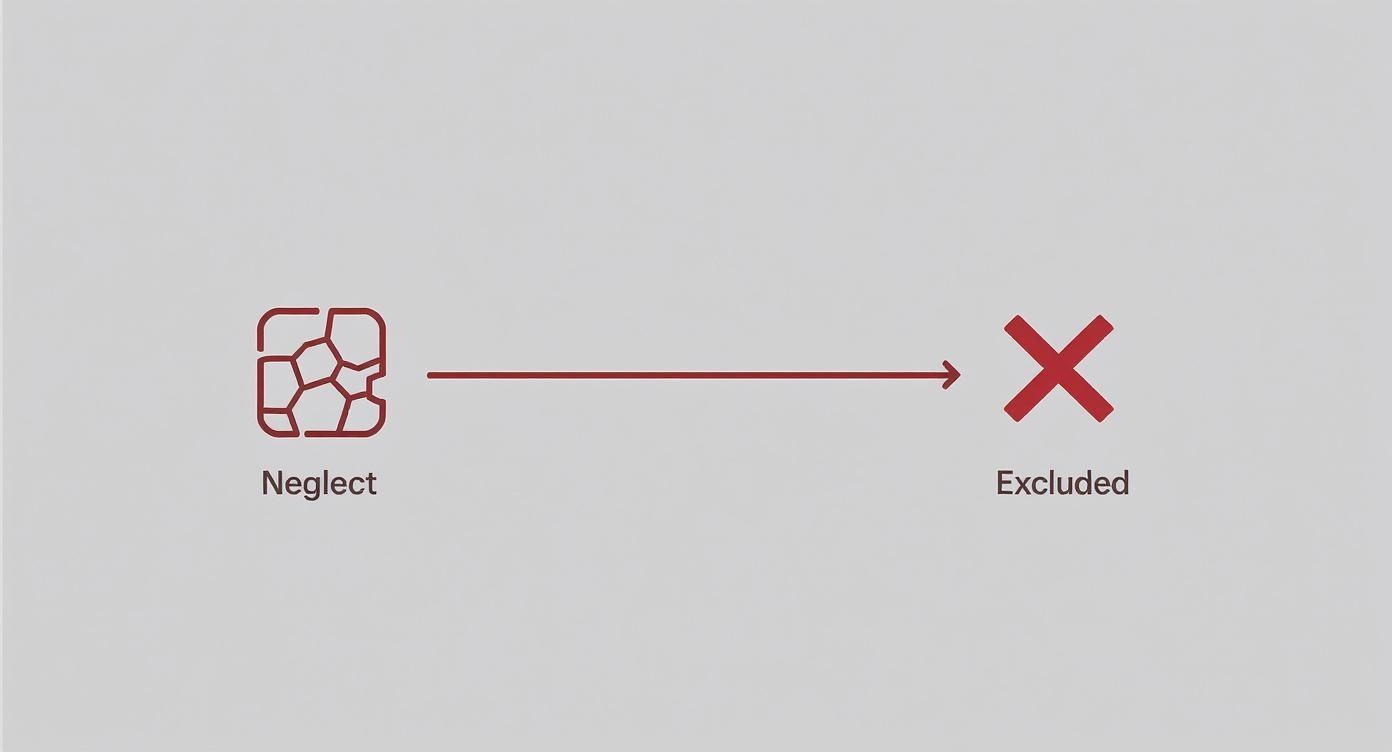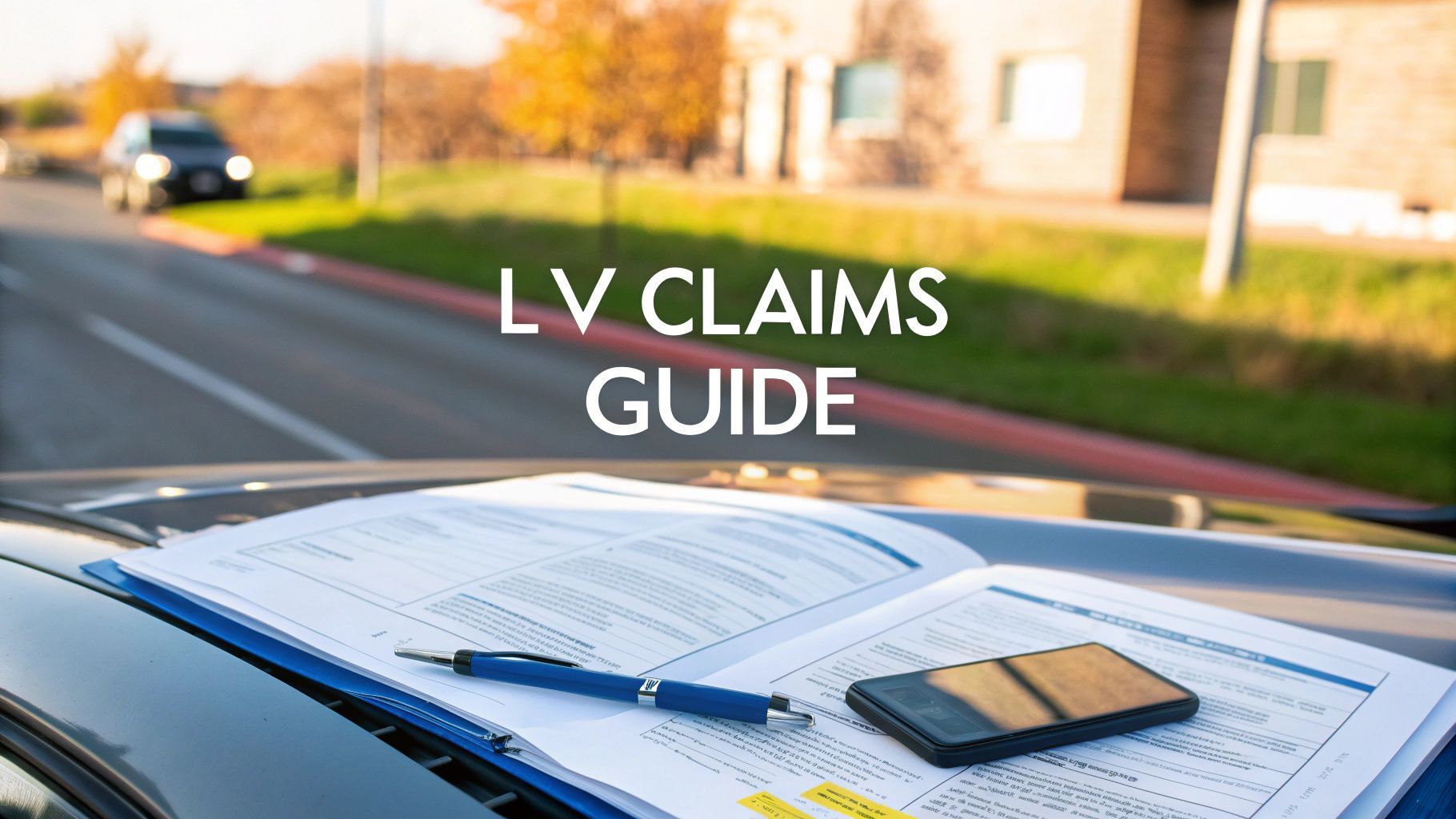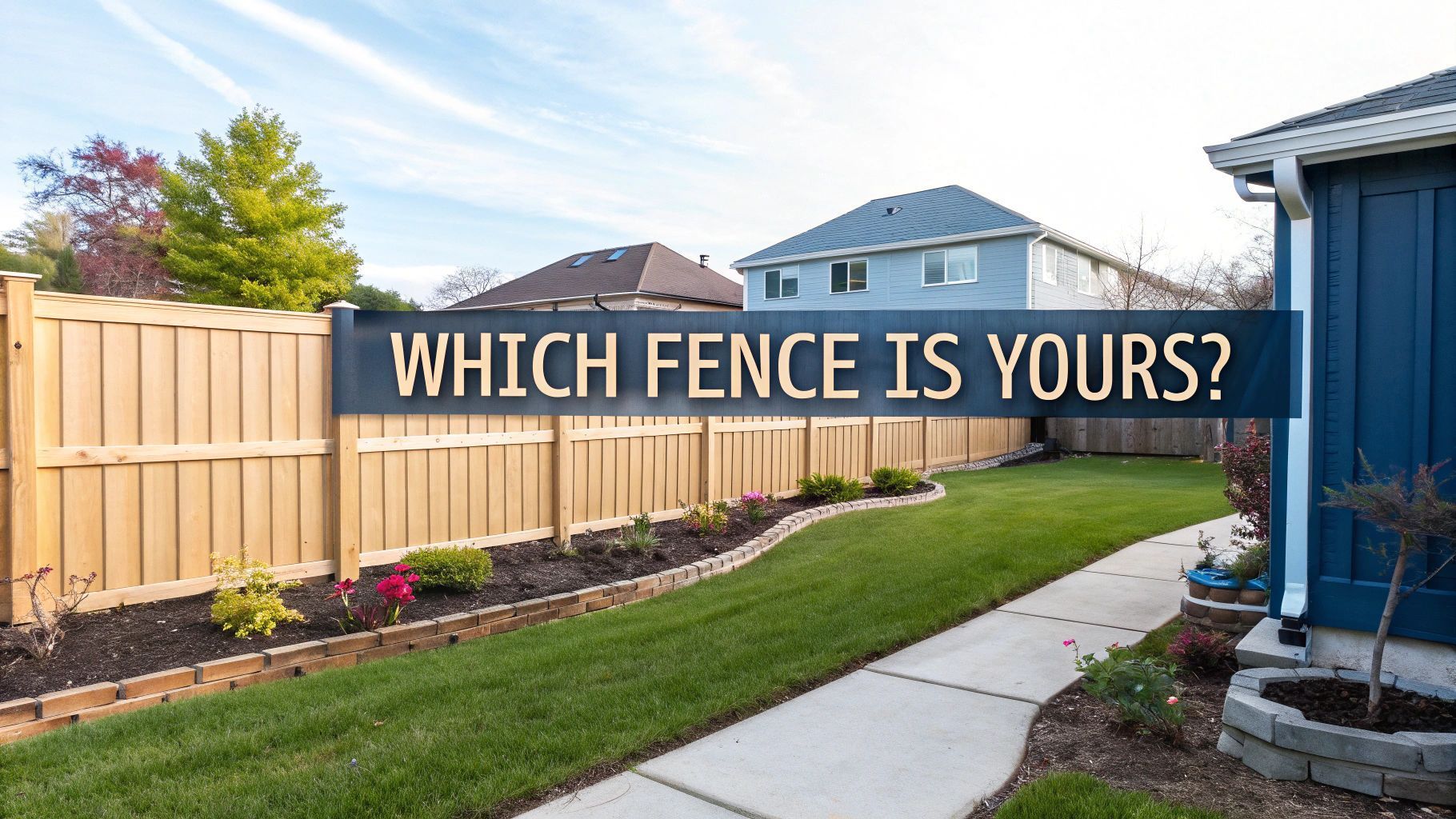Will house insurance cover a leaking roof: Find out now
It’s one of the first questions any homeowner asks when they spot a dreaded damp patch on the ceiling: is a leaking roof covered by my house insurance?
The short answer is, it depends. Typically, your insurance will step in if the leak was caused by something sudden and accidental – think a storm tearing tiles from your roof or a falling tree branch. But it almost certainly will not cover leaks that are the result of gradual wear and tear or a lack of maintenance.
The Critical Difference: Sudden Damage vs. Slow Decay

This is the central principle that underpins how home insurance works. It is there to protect you from the unexpected, not the inevitable.
Think of it like your car insurance. Your policy pays out if another driver crashes into you but it will not cover the bill for fixing rust that has slowly eaten away at the bodywork over years. Home insurance operates on the very same logic. A violent storm that dislodges slates is an insurable event. A slow drip from a roof that has not seen a bit of care in a decade? That is on the homeowner.
To help you get a clearer picture, let's break down some common scenarios.
Quick Guide to Roof Leak Insurance Cover
Here’s a simple table outlining what is often covered and what is not when it comes to standard UK home insurance policies.
| Cause of Leak | Typically Covered? | Reasoning |
|---|---|---|
| Storm Damage (e.g., strong winds, hail) | Yes | This is a classic "sudden and accidental" event outside of your control. |
| Falling Objects (e.g., trees, branches) | Yes | Another unforeseen incident that your policy is designed to protect against. |
| Vandalism or Malicious Damage | Yes | Considered an unexpected, accidental event. |
| General Wear and Tear | No | Insurers expect you to maintain your property. Gradual decay is not covered. |
| Neglected Maintenance (e.g., blocked gutters) | No | Damage resulting from a failure to perform routine upkeep is your responsibility. |
| Faulty Workmanship | No | This is an issue to take up with the original contractor, not your insurer. |
Remember, this is just a guide. Every policy has its own specific terms and exclusions, so always check your documents to be certain.
The Burden of Proof Rests with You
When you make a claim, the responsibility to prove the damage was sudden and accidental falls squarely on your shoulders. Insurers are, quite rightly, cautious. The provability of a claim is paramount. Claims for damage that are actually just long-term decay are incredibly common, so they need to see clear evidence before they pay out.
Without undeniable proof that an unforeseen event caused the leak, you could find your claim is rejected. This is where the integrity of the whole process comes into play. The insurer needs to be absolutely certain a claim is legitimate to protect the system from fraud and to ensure that only valid claims are paid.
Why False Claims Hurt Everyone
Insurance fraud is not a victimless crime. When someone falsely blames a recent storm for a leak that has been developing for years, they are committing fraud. This forces insurers to spend more time and money on investigations and illegitimate payouts, driving up costs for the entire industry.
Insurance fraud inflates the cost of premiums for everyone. When a minority submit dishonest claims, the financial burden is spread across all honest policyholders, making cover more expensive for us all.
This reality highlights just how crucial provability is. With verifiable evidence, you not only demonstrate the legitimacy of your own claim for a smooth process but you also help maintain a fair insurance market for everyone.
And the scale of the issue is massive. In the UK, roof leak claims are becoming more and more common, especially with the increase in severe weather events. Storm and wind damage now account for a huge number of residential roofing claims. Industry data shows the UK sees over 70,000 roofing insurance claims annually , with the average property claim for household damage now at £6,200 . If you want to dig deeper, you can explore more UK roofing statistics to understand the full picture.
This is exactly why insurers must rigorously check every claim, carefully separating genuine accidental damage from neglect.
Understanding Critical Policy Exclusions
Diving into your home insurance policy can feel like you are trying to decode a secret language but getting your head around the exclusions is absolutely vital. When it comes to a leaking roof, insurers are very clear about what they will not cover and the reasons often catch homeowners completely off guard. The most common reason a claim gets rejected is not a sudden, dramatic storm—it is predictable decay.
Insurers work on a simple principle: policies are for sudden, unforeseen events, not for problems that stem from neglect. This is why ‘wear and tear’ and ‘lack of maintenance’ are standard exclusions in almost every single UK home insurance policy. These terms are a catch-all for a whole range of gradual issues that a homeowner is expected to spot and manage themselves.
For example, if a roof leak is traced back to moss buildup that has been left to grow for years, slowly forcing tiles apart and letting water in, an insurer will almost certainly reject the claim. In the same way, sealant around your roof's flashing that has cracked and perished over time without ever being checked is considered a maintenance issue, not something you can insure against.
Common Exclusions Beyond General Wear and Tear
Beyond that predictable decay, there are several other specific situations that are typically excluded from cover for a leaking roof. Knowing what these are ahead of time can save you a world of frustration and disappointment when you actually need to make a claim.
Here are some other common policy exclusions you will find:
- Damage from Pests: If squirrels, birds, or insects have been chewing through your roof structure or dislodging tiles, leading to a leak, this is often not covered.
- Faulty Workmanship: Let's say a leak springs up because a roofer carried out a shoddy repair or a poor-quality installation. That is not an insurance matter. Your dispute would be with the contractor who did the work.
- Gradual Water Ingress: Policies are built to cover the consequences of a sudden event. A slow drip that has been quietly seeping through for months, or even years, will fall squarely under that maintenance exclusion.
The insurer's position is pretty straightforward: your policy is a safety net for accidents, not a substitute for regular home upkeep. They expect you to act like a diligent homeowner, preventing predictable problems before they spiral into major damage.
Failing to grasp these exclusions is one of the main reasons why an insurance company might refuse to pay a claim. This all comes back to the need for clear, provable evidence that the damage was genuinely sudden and accidental. Without it, you could be facing a real uphill battle. A rejected claim not only leaves you footing the entire repair bill but it can also make it harder and more expensive to get insurance in the future.
How to Build a Watertight Insurance Claim
When your roof starts leaking, the burden of proof rests firmly on your shoulders. It is your job as the policyholder to show the insurer that the damage was both sudden and accidental. Without clear, verifiable evidence, you risk having your claim rejected, leaving you to foot the bill for the entire repair.
Building a solid claim is not about trying to trick your insurer; it is about providing them with the facts needed to validate your claim. The provability of your claim is everything. A well-documented, honest claim is far more likely to be processed smoothly and helps keep the insurance system fair for everyone.
Gathering Your Essential Evidence
To build a compelling case, you need to act quickly and methodically. Your goal is to create an undeniable record of what happened and the damage it caused. Think of yourself as an investigator compiling a dossier—every piece of evidence strengthens your position.
Here are the critical components you need to gather:
- Dated Photos and Videos: As soon as it is safe, take plenty of photos and videos of the damage. Capture the leak from inside your home and, if possible, any visible damage to the roof outside. Your smartphone automatically timestamps this media, which provides crucial proof of when the damage occurred.
- A Detailed Timeline: Write down a clear sequence of events. Note when you first spotted the leak, what the weather was like at the time, and any immediate steps you took to prevent things from getting worse.
- Weather Reports: Find and save local weather reports from the day the damage happened. Evidence of a severe storm with high winds or heavy rain provides powerful, independent backup for your claim that a specific weather event was the cause.
- Professional Assessments: Get a written report from a qualified roofer. Their expert assessment can confirm the cause of the leak and give you a detailed estimate for the repairs, adding a layer of professional credibility to your claim.
The process flow below shows how neglect—the very opposite of sudden damage—leads directly to a policy exclusion.

This visual highlights a fundamental principle of insurance: it is there to cover unforeseen accidents, not predictable decay from a lack of maintenance.
For a more detailed walkthrough, you can find some excellent tips on navigating the roof insurance claim process. Getting these steps right is crucial for a successful outcome. To learn even more, check out our comprehensive guide and master the home insurance claims process.
The Hidden Costs of Insurance Fraud
When you are making a claim for a leaking roof, insurers are not just looking at the damage; they have to stay alert for potential fraud. This is not always about spotting some wild, made-up story. More often, insurance fraud is a lot more subtle.
It can range from someone deliberately damaging their own property to much more common deceptions, like exaggerating how bad a leak really is or trying to blame years of wear and tear on a single recent storm. This is why the provability of a claim is so critical for insurers.
While it might feel tempting to stretch the truth to get a payout, the consequences for you personally can be severe. If you are caught, you are looking at more than just a rejected claim. You could face criminal prosecution, a permanent record, and find it incredibly difficult and expensive to get insurance in the future. That short-term gain just is not worth the long-term pain.
How Fraud Pushes Premiums Up for Everyone
The fallout from insurance fraud goes far beyond the individual. It is an expensive problem that ends up hitting every single honest policyholder right here in the UK. When an insurer pays out on a fraudulent claim, that money does not just vanish from some massive corporate vault. Instead, that loss gets spread across the entire insurance pool—which is funded by everyone's premiums.
This creates a ripple effect that washes over the whole industry. To make up for the money lost to fraud, insurers have no choice but to raise their overall premium rates.
In plain English, the cost of dishonesty gets passed directly onto honest customers. Every fraudulent or exaggerated claim for a leaking roof helps make house insurance cover for a leaking roof more expensive for your friends, family, and neighbours.
This cycle is exactly why having solid proof is so important. Verifiable, time-stamped evidence does not just back up a genuine claim; it is also a powerful defence against fraud. By proving your claim is legitimate, you help your insurer process it quickly while also protecting the integrity of the very system we all rely on.
The Scale of the Problem
The financial toll of insurance fraud is genuinely staggering and it does not just affect property claims—it hits every corner of the industry. It is a multi-billion-pound issue that ultimately trickles down to you, the consumer. Honest policyholders end up paying a sort of "hidden tax" through their premiums to cover the losses created by a dishonest few.
Getting your head around the full scope of the problem is key. It helps to reframe the claims process not as a battle against your insurer but as a partnership built on trust and verifiable facts. To understand the wider economic impact, you can learn more about what insurance fraud really costs the industry and see how it affects every one of us.
Proactive Roof Maintenance That Prevents Claims

We have all heard the saying, "prevention is better than cure" and nowhere is that truer than with your roof. When an insurer rejects a claim for a leaky roof because of poor maintenance, they are not just being difficult. They are simply sticking to the agreement you both signed up to. Insurance is there for the unexpected, not the inevitable decay that comes from neglect.
Taking a proactive approach to roof care is the single best way to stop most leaks before they even begin. This does not just protect your home from damage; it ensures your house insurance cover for a leaking roof remains a reliable safety net for genuine accidents. Think of it as a smart investment that saves you a world of money and stress down the line.
Your Simple Roof Maintenance Checklist
Regular upkeep does not have to be complicated or break the bank. A few straightforward checks, carried out twice a year (spring and autumn are ideal), can make all the difference. These simple actions are your first line of defence against the gradual wear and tear that policies are designed to exclude.
Here is a practical checklist to get you started:
- Clear Your Gutters and Drains: It is amazing how much trouble blocked gutters can cause. When water cannot drain away, it overflows and seeps under your roof tiles, leading to damp and rot. Keeping them clear is one of the easiest wins in home maintenance.
- Inspect Tiles and Slates: Have a good look for any tiles that are cracked, have slipped out of place, or gone missing altogether. A single rogue tile is like leaving a window open in a rainstorm—it is an open invitation for water to get into your roof space.
- Check Flashing and Sealants: Take a close look at the lead or mortar flashing around chimneys, vents, and skylights. These are notorious weak spots where seals can crack and wear away over time, creating a direct path for water.
The Value of Professional Inspections
While your own checks are essential, a professional roofer has a trained eye for spotting subtle issues that most of us would miss. Getting an expert in for an inspection every year or two gives you a proper health check for your roof, catching problems before they escalate into costly leaks and major insurance claims.
This small outlay is nothing compared to the cost of extensive repairs later on. While the price of fixing a leaking roof in the UK can vary, the average sits at around £375 . A minor fix might only be £150 but a serious issue can easily top £1,000 —and that is before you even think about the cost of redecorating the inside of your house. You can find out more about the potential costs of roof leak repairs on MyJobQuote.co.uk.
Good maintenance is not just about ticking a box to keep your insurer happy; it is about protecting your most valuable asset. A well-maintained roof is what keeps your property safe and ensures your insurance policy can do its job when you genuinely need it.
Understanding Underinsurance and Its Financial Risks
Beyond the immediate crisis of a leak, a quieter but equally serious danger lurks for many homeowners: underinsurance . This happens when your policy’s ‘sum insured’—the maximum amount it will pay out—is too low to cover the full cost of rebuilding your home after a major disaster.
Imagine a severe storm causes catastrophic damage, tearing through your roof and the structure beneath it. You file a claim, only to discover your cover falls short of the actual rebuilding costs by tens of thousands of pounds. This gap leaves you with a devastating choice: find the money yourself or compromise on repairs, potentially devaluing your home for good.
This is not some rare, unlucky scenario; it is a widespread risk that has been quietly growing, amplified by rising costs right here in the UK.
The Growing Threat of Inadequate Cover
The financial landscape for property owners has shifted dramatically. The UK property insurance market has seen a huge surge in claims for weather-related damage, which has pushed costs up for everyone. Between 2021 and 2024, buildings insurance premiums rocketed by an eye-watering 85% .
On top of that, a staggering 76% of UK buildings are now considered underinsured. This means countless homeowners are financially exposed without even realising it. You can discover more insights about these 2025 home insurance challenges and how they might affect you.
This situation makes it more important than ever to ensure your house insurance cover for a leaking roof and other potential damage is actually sufficient for today's world.
Being underinsured is like having a lifeboat that is too small. In an emergency, it simply will not be enough to keep you afloat financially, forcing you to cover a significant portion of the loss out of your own pocket.
To protect your most valuable asset, you have to review your policy regularly. Do not just let it auto-renew year after year. Check that your sum insured reflects today’s rebuilding costs, not what your house was worth five or ten years ago.
A quick conversation with your insurer or a broker can help you adjust your cover, ensuring you have the right protection in place for when you truly need it.
Frequently Asked Questions
How Quickly Do I Need to Report a Leaking Roof to My Insurer?
You should tell your insurer about a roof leak as soon as it is safe to do so. Nearly every policy will mention the need for ‘prompt notification’. If you wait too long, the insurer could argue that your delay made the damage worse, which might jeopardise your claim.
The best thing to do is take immediate, sensible steps to limit the damage—think buckets and towels—and then get on the phone to your insurer. It shows you are a responsible homeowner and strengthens your position right from the start.
Will My Insurance Pay for Someone to Find the Leak?
This is a classic "it depends on your policy" situation. Most standard home insurance policies will cover the resulting damage caused by the leak, like a ruined ceiling or soggy carpet. However, they often will not cover the cost of actually finding the source of the problem, a service known as 'trace and access'.
To get cover for this, you usually need a specific add-on to your policy. It is well worth digging out your policy documents and checking what is included before you are faced with an unexpected bill for the investigation work.
Can I Use My Own Roofer to Do the Repairs?
Insurers generally prefer you use their network of approved repairers because it keeps the process straightforward for them. You can, of course, ask to use your own trusted roofer but the insurer will need to approve them and their quote before any work begins.
It is always a good idea to get a couple of independent quotes anyway, just to make sure the costs being proposed are fair. Keep your insurer in the loop before you give anyone the green light, unless it is a genuine emergency repair to stop things from getting worse. That kind of transparency is key to a smooth claims process.
Ultimately, while using the insurer's recommended team is often simpler, the choice is still yours as long as you play by their rules and get everything approved first.
Secure your claims and protect against fraud with Proova . Our platform provides the verifiable proof you need for a fast and fair process. Learn more at https://www.proova.com.












